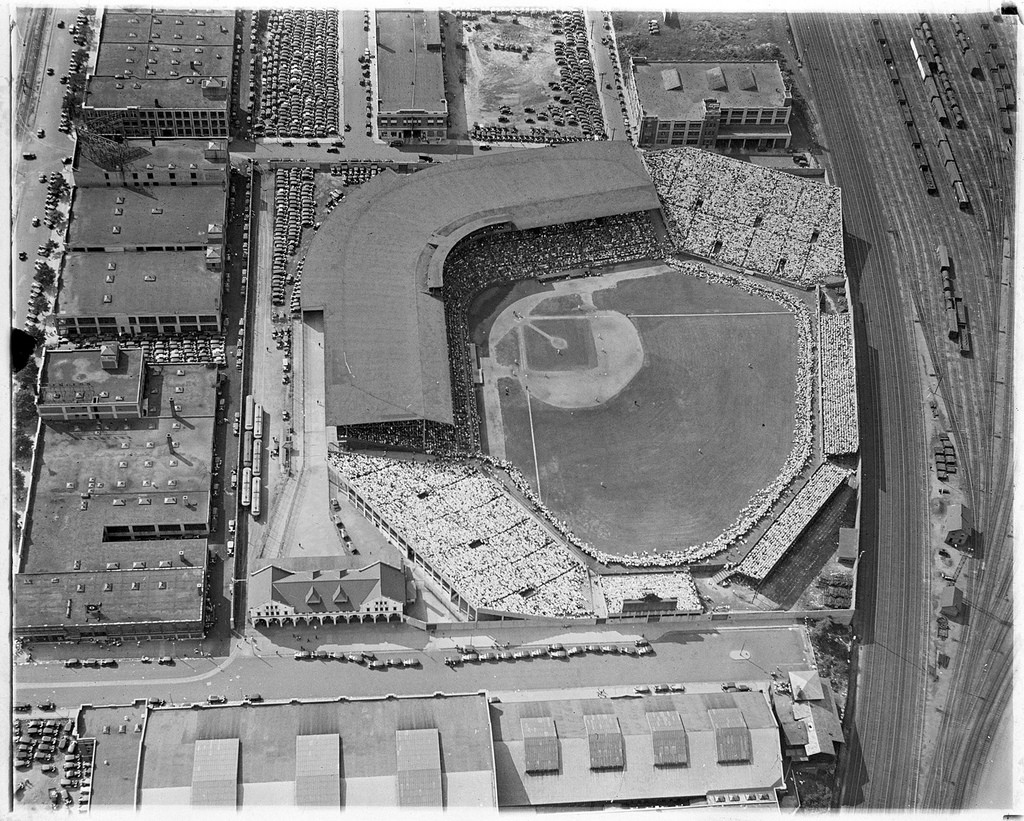The Boston Red Sox and Los Angeles Dodgers are playing in this year’s World Series, providing a matchup of two signature franchises. This year’s Fall Classic also showcases two ballparks with plenty of World Series history, evoking reminders of the rich histories of their predecessors.
Boston’s Fenway Park is currently MLB’s oldest ballpark—it opened in 1912—and a decade of upgrades ensures it will remain a viable home for years to come. The Dodgers, meanwhile, have played at Dodger Stadium since 1962 and have executed upgrades in recent years that make it a suitable home by modern baseball standards. Both ballparks have distinct histories and are familiar settings for the Fall Classic, but their predecessors also had their own highlights in modern World Series history.
The history of the modern World Series began in 1903, when the American League champion Boston Americans (later the Red Sox) faced the National League champion Pittsburgh Pirates. The Americans played at Boston’s Huntington Avenue Grounds and clinched the title there in game eight of the series. In 1904, Boston repeated as American League champs, but the World Series was cancelled when the National League-pennant winning New York Giants refused to play (the teams were not technically obligated to play in the series at that time).
As a result, Huntington Avenue Grounds never hosted another World Series game after 1903. Boston did not play in the World Series again until 1912, the Red Sox’s first season at Fenway Park. Over their 107 seasons at Fenway Park, the Red Sox have appeared in 12 World Series and played home games at the ballpark in all but two: 1915 and 1916. In those years, the Red Sox played World Series home games at the Boston Braves’ Braves Field—a venue that accommodated more fans than Fenway Park.
The Red Sox clinched the 1918 World Series with a game-six win over the Chicago Cubs at Fenway Park and did not win another title until 2004. The team’s World Series wins in 2004 and 2007 were clinched at St. Louis’ Busch Stadium and Colorado’s Coors Field respectively, with the 2013 title cemented in a game six win over the St. Louis Cardinals at Fenway Park.
Boston’s ballpark history is fairly well preserved, and fans that venture to the city for the World Series can find physical reminders of both Braves Field and Huntington Avenue Grounds at their former sites. Portions of Braves Field still stand today as Nickerson Field, a venue for Boston University athletics. Huntington Avenue Grounds was demolished long ago and most of the site is occupied by Northeastern University facilities, but there are commemorations on a portion of the site—including a statue of Cy Young and plaques noting the ballpark’s history.
In their long history, the Dodgers have also played World Series home games in a historic range of ballparks—spanning two cities and three facilities. In 1916, the Brooklyn Dodgers made their first trip to the modern World Series and hosted games three and four against the Red Sox at Ebbets Field. The 1916 series was the first of nine that the Dodgers reached during their years at Ebbets’ Field (as it was known then), but it was not until 1955 that they finally won the Fall Classic. They returned to the World Series in 1956, losing in seven games to the New York Yankees.
There was just one more season of baseball at Ebetts Field, as the Dodgers relocated to Los Angeles prior to the 1958 campaign. With a new ballpark a few years away, the Dodgers moved into the Los Angeles Memorial Coliseum upon their arrival in Los Angeles. The Coliseum saw its first and only World Series games in 1959, when the Dodgers defeated the Chicago White Sox to win their first title in Los Angeles (also the first by a California-based team). Games three-five were the only Fall Classic games to be played at the Coliseum, but they were enough to make it one of just of four venues that has been a site for both the World Series and Super Bowl. The Coliseum remains an active today, hosting USC football and the NFL’s Rams.
The Dodgers moved into Dodger Stadium in 1962, and 2018 marks the tenth time since the ballpark’s opening that they have gone to the World Series. Of the previous nine trips, four resulted in wins for the Dodgers with one of those titles—1963—clinched at Dodger Stadium. The ballpark’s most memorable World Series moment was arguably game one of the 1988 Fall Classic, when Kirk Gibson’s pinch-hit walk-off home run gave the Dodgers the victory and set the table for an upset World Series win in five games over the Oakland A’s.
Until it concludes, we won’t know whether the 2018 World Series goes down in the category of memorable Fall Classics in baseball history. It is already apparent, however, that it is being played in two of baseball’s signature ballparks, by franchises that have been a part of many memorable World Series moments over the years.

